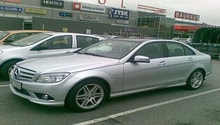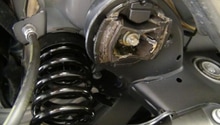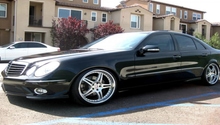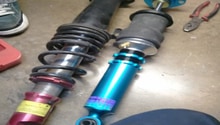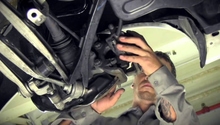Mercedes-Benz C-Class: Why is My Suspension Bouncy/Rough?
If you have noticed your C-Class has begun to ride a bit rough or the suspension has become bouncy, it is likely a component in the suspension system has given away. While this may sound alarming, the suspension system in the w204 is of a fairly simple design that allows for easy component inspection that can be done at home.
This article applies to the Mercedes-Benz C-Class w204 (2007-2014).
The Mercedes-Benz C-Class is pitched as an entry level sports/luxury car. Being such, it is a well rounded model that combines modern technologies and catchy styling—with sport oriented engine and suspension performance. C-Class owners report that their cars generally have a stiffer ride that transmits positive road feedback through the steering wheel. Although the ride may be considered a bit firm for some, owners who experience an extremely rough ride or excessive suspension bounce most likely have an issue with a suspension component. This article will give an overview of the suspension components that may be causing that awful ride in your C-Class.

Materials Needed
- Floor jack and jack stands
- Tire iron
Step 1 – Check tire pressure
An over-inflated tire will provide a much stiffer ride than a properly inflated tire. Often times, vehicle service stations or tire shops fail to adhere to the vehicles recommended tire pressure, and fill the tires with excessive air pressure when doing routine maintenance on a car. This results in a tire that will be overly stiff, and will not cushion the ride when driving over road irregularities or potholes. Tires naturally conform to the road surface in order to isolate noise and harshness when properly inflated. Although tire pressure monitors are very efficient at monitoring a leak, they should not be used to accurately determine the vehicle's tire pressure. Use a quality pressure gauge, and refer to the owner's manual for proper tire inflation pressures. An overly stiff ride may simply be cured by correcting the tire pressures.
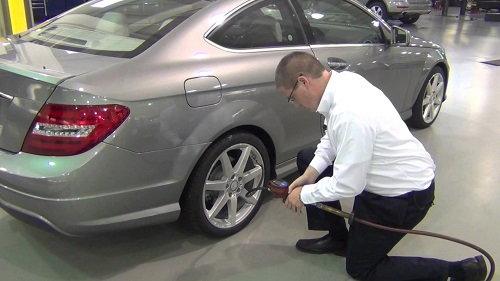
Pro Tip
In addition to the owner's manual, there is typically a placard under the fuel filler door that will indicate proper tire pressure for your vehicle.
Step 2 – Check shock absorbers
If the ride of your C-Class has become noticeably bouncy, you may have a blown out or leaking shock(s). The shocks in the suspension system dampen the motion of the springs as the suspension works up and down. This is accomplished by a piston connected to a shaft that works up and down inside of an oil filed cylinder to provide resistance (also known as dampening) during the compression and rebound of the coil spring. This allows the tires to quickly absorb bumps, while also allowing the tires to return to their position and provide resistance back onto the pavement. When the cylinder, piston, or oil seals wear, the shocks can begin to leak fluid and no longer provide the designed dampening effect. Similarly, if the car has hit a large bump and excessively bottomed out, the shock can become damaged and the seals blown out. Shocks can quickly be inspected from underneath the vehicle, or by lifting each corner and removing the wheel. Look for signs of oil leakage around the shock body. The suspension can also be bounced up and down while the car is sitting on the ground. A properly working shock absorber will allow the suspension to compress and settle back to its original position, whereas a faulty shock will allow the suspension to continue to bounce.
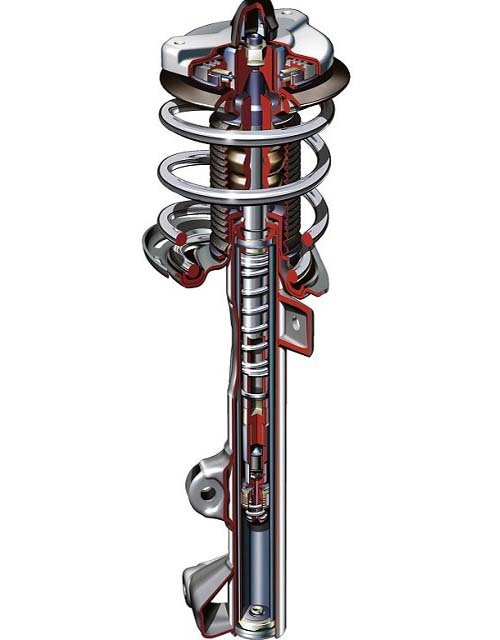
Figure 2. W204 front strut cutaway. 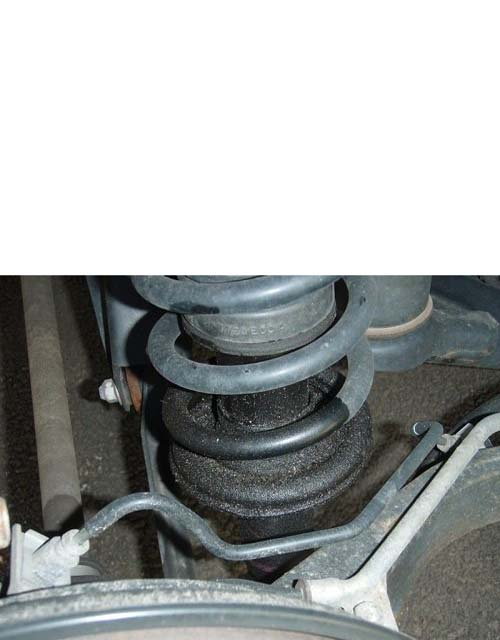
Figure 3. Example of leaking shock.
Pro Tip
The front shocks are part of the strut assembly (as pictured above). The rear shocks are separate from the coil spring.
Step 3 – Check coils springs
The C-Class uses coil springs that compress and expand as the the car is driven. The font suspension uses these coil springs as part of the strut, whereas the rear suspension uses coil springs separate from the shocks. While fairly uncommon, these coil spring can sometimes break and reduce ride quality. Often times, a broken spring will result in the suspension to sag and will be accompanied by a "clanking" or "pinging" type of noise when driven over bumps. When springs break, it is usually from fatigue of working up and down over many miles. Similarly, corrosion can set in on a spring, which will affect its integrity and eventually cause a spring failure. Springs can be inspected with the wheels removed. Be sure to inspect the very top and bottom of the springs where they rest in their perches, as they often break towards the ends.
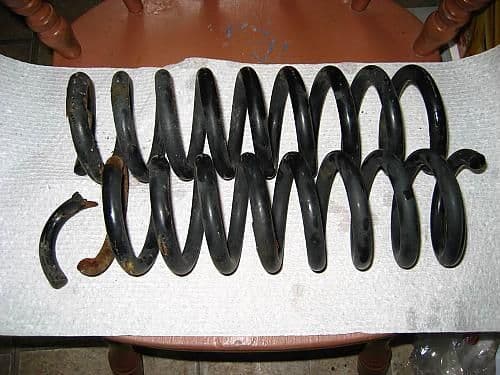
Step 4 – Check sway bar and sway bar links
The sway bars (also known as anti-roll bars) connect the suspension components of each axle together to reduce body roll by applying the load from one side of the suspension to the other. The sway bar ends on the w204 are connected to the suspension via sway bar links. These links are under a great amount of stress, especially on lowered cars, and the bushings can wear or the link can even break in half. While a damaged sway bar or sway bar link will not necessarily create a bouncy ride, you will notice excessive body roll when cornering. Also, the handling may seem a bit twitchy over bumps and potholes. The sway bars and sway bar links are easily inspected with the wheels removed.
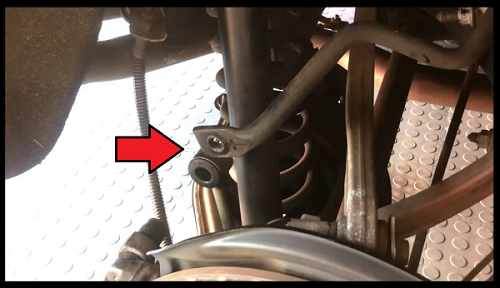
Step 5 – Check lowering springs
For individuals who have lowered their cars with lowering springs, a stiffer ride is to be expected. While not as effective from a performance standpoint as installing a set of coilovers, lowering springs improve the ride height of the car while maintaining the original shocks. In turn, the ride is firmed up, so bumps and road irregularities are more easily noticed. It is worth noting that some springs that lower the car a substantial amount do not allow the original shocks to work within their optimal range of motion, and can easily allow bottoming. Excessive bottoming out can result in damaged shocks, which will further reduce suspension compliance.
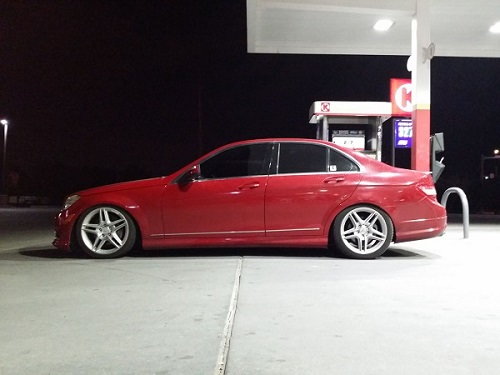
Pro Tip
If looking for an extremely low ride out of your C-Class, owners often recommend installing coilovers instead of lowering springs as the coilovers allow increased ride height and dampening adjustability. With these features, coilovers allow individuals to fine tune the ride characteristics of their cars.
Related Discussions
- Rough Ride - MBWorld.org
- Official W204 Lowering Spring Thread - MBWorld.org
- Car Too Bouncy, H&R Springs - MBWorld.org
- Need Suspension Gurus - MBWorld.org

